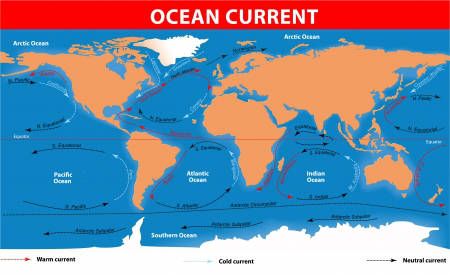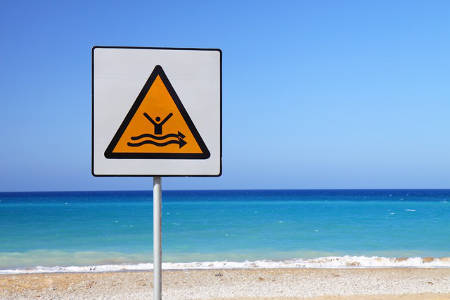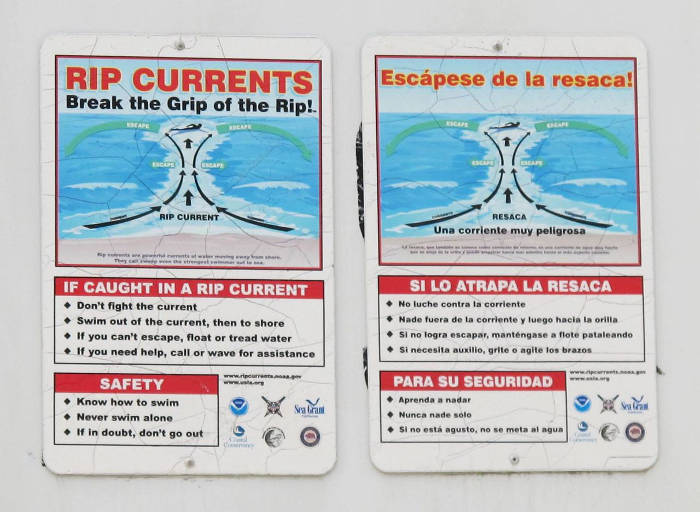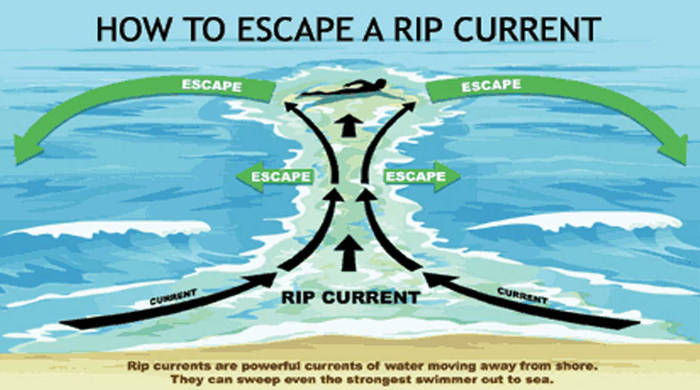Rip currents
What's a current?
A current is a moving body of water. Currents are caused by all kinds of things - temperature differences in oceans, comparative salinity, wind, the shape of the shoreline, waves. They can be vast, like the Gulf Stream, or small, like the current that runs between two rocks when the tide is going out. But we find them all over the place: they are normal in the sea.
Having said that, you still need to be aware of them. If you're snorkelling off the shore and suddenly a current catches you and pulls you out to sea, you could be in trouble. So, keep an eye on the sea floor, or on a landmark on the shore - a house or an electricity pylon. If you see it moving past you when you're not swimming very hard, it means you're in a current. If that happens, don't try and fight it: swim at right angles to the current, or diagonally, towards the shore. Currents aren't always that wide.
We tend to think of the sea as a static thing, like a big pond: but of course it isn't. Water is usually moving in some direction or other - whether because of the wind, or currents, or tides. It helps if you know this.
You'll find currents in all kinds of places, between rocks, round headlands, in coves where it's windy, sometimes on a rolling gravel beach. They aren't usually that strong, and normally it's easy to deal with them, as long as you are aware that you are being pulled along. Be aware - that's the key to snorkelling.




What's a rip current?
A rip current occurs in a particular formation of beach, because of the shape of the coast, sandbanks or rocks. Essentially the water comes round the sides of the beach, and is then sucked into the middle and forced out to sea. If you're snorkelling there when this happens, you will find yourself being rushed out to sea at 4 to 5 miles per hour. This doesn't sound fast - but it's quicker than an Olympic swimmer. You won't be able to swim against it.
Where does this happen? At the mouths of estuaries, near artificial structures like piers or groynes, or by sandbanks. They're not easy to see, but sometimes can look like rolling churning surf.
If you get caught in a rip current, don't try to swim against it: swim across it, parallel to the shore until you get out of the current. If you can stand, walk across the current. Wave your hands in the air and shout for help. People die in rip currents because they panic and get exhausted. Conserve your energy, use your wits, and try to swim across the current, not against it.
Rip currents tend to be specific to certain countries and locations. We have never come across one, but we are aware of them. For a really good explanation, watch http://www.bbc.co.uk/news/av/world-asia-25559412/how-rip-currents-work
Above: public safety notices from Mission Beach, San Diego, and from the Los Angeles Fire Department.
Usual warning: we have made very effort to make sure this information is correct and up-to-date, but you need to check it all yourself.

© Garreg Lwyd Ltd 2018
Further information:
Beachsafe Australia:
https://beachsafe.org.au/surf-safety/ripcurrents
Livescience.com
https://www.livescience.com/3910-rip-currents-ocean-deadliest-trick.html
National Geographic
https://www.nationalgeographic.org/encyclopedia/rip-current/
